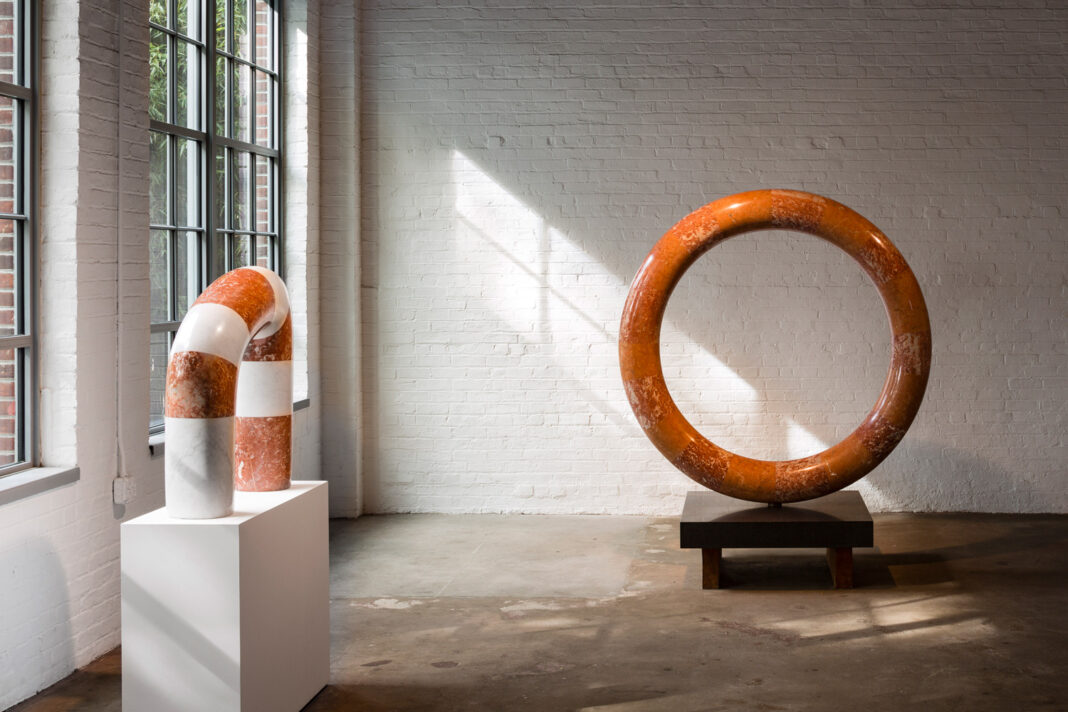|
Getting your Trinity Audio player ready...
|
NY Museum Dismisses Three Employees for Violating New Dress Code by Wearing Keffiyehs
Edited by: TJVNews.com
In an era where art museums are often seen as bastions of free expression, the recent decision by New York City’s Noguchi Museum to terminate three employees for wearing keffiyeh head scarves has ignited a heated debate about the boundaries of political symbolism and institutional neutrality. The incident, which centers around the keffiyeh—a traditional Middle Eastern scarf that has become an emblem of solidarity with the Palestinian cause—has drawn attention to broader tensions regarding political messaging in public spaces, especially in culturally significant institutions like museums.
According to a Reuters report, the controversy began when the Noguchi Museum, founded by renowned Japanese American sculptor Isamu Noguchi, updated its dress code policy. The policy, designed to enforce neutrality, prohibited employees from wearing anything that could be interpreted as expressing “political messages, slogans, or symbols.” While such rules are not uncommon in workplaces that aim to remain inclusive and avoid alienating diverse audiences, the museum’s decision to enforce the policy by firing employees who wore keffiyehs struck a sensitive chord in the current political climate.
Three gallery attendants were dismissed from their positions following their decision to wear keffiyeh scarves to work, in what they described as an act of personal expression and solidarity with the Palestinian cause. One of the dismissed employees, Natalie Cappellini, took to social media to decry the decision, accusing the museum of “weaponizing the term ‘political'” against the Palestinian cause. As per the information provided in the Reuters report, she argued that by banning the keffiyeh, the museum was taking an implicit political stance by attempting to suppress one of the most prominent symbols associated with Palestinian identity and struggle. The other two fired employees have not yet spoken publicly about the incident, and efforts by media outlets, including Reuters, to reach them have been unsuccessful.
At the heart of this controversy lies the keffiyeh itself—a scarf with deep cultural, historical, and political significance. Traditionally worn by Arab men in the Middle East, the keffiyeh became a global symbol of resistance during the 20th century. Yasser Arafat, the former leader of the Palestine Liberation Organization (PLO), popularized the garment internationally as he wore it consistently throughout his political career, as was reported by Reuters. Today, the keffiyeh has become a widely recognized symbol of solidarity with the pro-Hamas, pro-terror cause.
For many, wearing a keffiyeh is not simply an expression of cultural identity but a political statement. Its association with Palestinian nationalism means that those who don the scarf may be viewed as aligning themselves with Hamas or any other Iranian backed terrorist organization. As such, the keffiyeh occupies a contentious space in international political discourse, with its meaning varying significantly depending on context, geography, and individual perspective.
The Noguchi Museum’s decision to enforce its dress code and prohibit political symbols reflects a broader challenge faced by cultural institutions in today’s polarized environment. Museums, by their very nature, are spaces that preserve, interpret, and showcase art and culture. They often occupy a delicate balancing act between encouraging free expression and fostering an inclusive environment for all visitors. In recent years, this balance has been increasingly difficult to maintain as political and social movements intersect with the world of art and cultural heritage.
By prohibiting its employees from wearing symbols that may be interpreted as political, the Noguchi Museum is following a common institutional approach to neutrality. Many organizations enforce similar policies in an effort to prevent employees’ personal views from becoming entangled with the public perception of the institution itself.
The museum, in its statement, emphasized that the intent behind its dress code was to avoid unintentionally alienating any segments of its diverse visitorship. This statement suggests that the museum views the keffiyeh not as a neutral cultural garment, but as a symbol that could potentially provoke controversy among visitors. Critics, however, argue that this perspective fails to account for the deeply embedded power dynamics that shape which symbols are deemed “political” and which are not. For instance, while the keffiyeh is viewed as political, other forms of dress, such as national or corporate symbols, might not face the same scrutiny.





